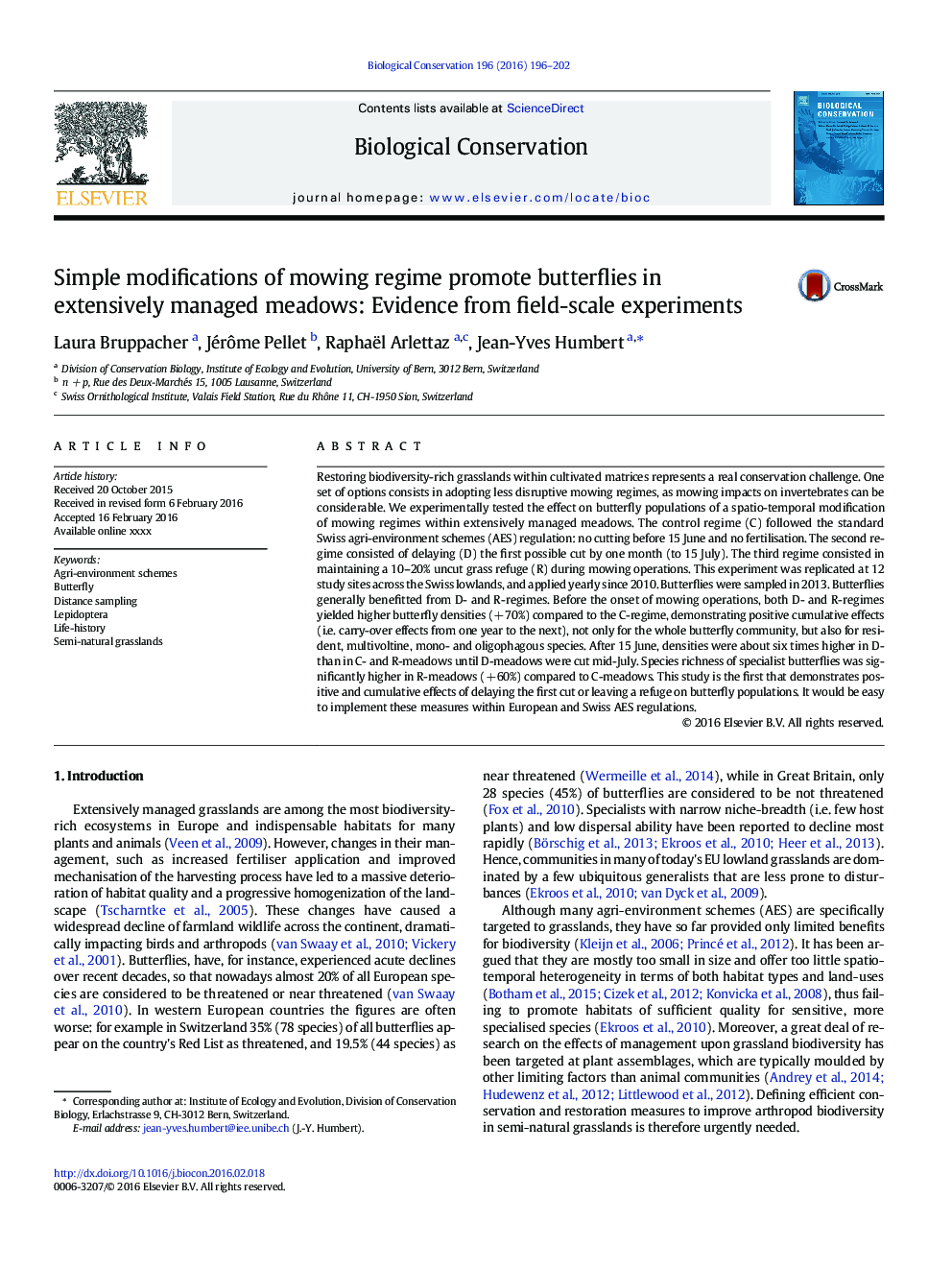| Article ID | Journal | Published Year | Pages | File Type |
|---|---|---|---|---|
| 6298509 | Biological Conservation | 2016 | 7 Pages |
Abstract
Restoring biodiversity-rich grasslands within cultivated matrices represents a real conservation challenge. One set of options consists in adopting less disruptive mowing regimes, as mowing impacts on invertebrates can be considerable. We experimentally tested the effect on butterfly populations of a spatio-temporal modification of mowing regimes within extensively managed meadows. The control regime (C) followed the standard Swiss agri-environment schemes (AES) regulation: no cutting before 15 June and no fertilisation. The second regime consisted of delaying (D) the first possible cut by one month (to 15 July). The third regime consisted in maintaining a 10-20% uncut grass refuge (R) during mowing operations. This experiment was replicated at 12 study sites across the Swiss lowlands, and applied yearly since 2010. Butterflies were sampled in 2013. Butterflies generally benefitted from D- and R-regimes. Before the onset of mowing operations, both D- and R-regimes yielded higher butterfly densities (+Â 70%) compared to the C-regime, demonstrating positive cumulative effects (i.e. carry-over effects from one year to the next), not only for the whole butterfly community, but also for resident, multivoltine, mono- and oligophagous species. After 15 June, densities were about six times higher in D- than in C- and R-meadows until D-meadows were cut mid-July. Species richness of specialist butterflies was significantly higher in R-meadows (+Â 60%) compared to C-meadows. This study is the first that demonstrates positive and cumulative effects of delaying the first cut or leaving a refuge on butterfly populations. It would be easy to implement these measures within European and Swiss AES regulations.
Keywords
Related Topics
Life Sciences
Agricultural and Biological Sciences
Ecology, Evolution, Behavior and Systematics
Authors
Laura Bruppacher, Jérôme Pellet, Raphaël Arlettaz, Jean-Yves Humbert,
